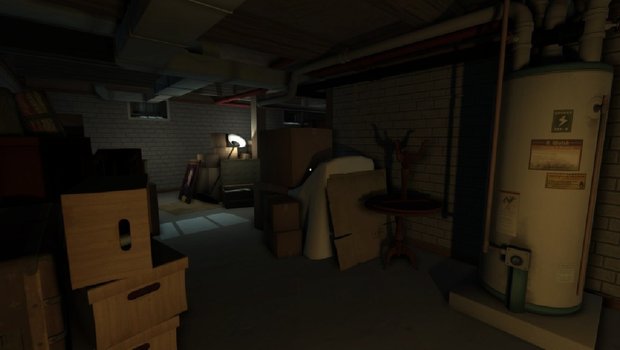GamesRadar+ Verdict
Pros
- +
The constant sense of discovery and exploration
- +
A richly-woven narrative for you to uncover
- +
Environments that are full of life and charm
Cons
- -
Finishing the game in two hours
- -
Little replay value
- -
Some fuzzy textures
Why you can trust GamesRadar+
Gone Home is a small window into the human experience. It invites you into an average family’s home to discover their fears, aspirations, and innermost secrets, culminating in the rare sort of game you don’t often get to play but wish you always had. As you explore this eerie estate during a dark and stormy night, you’ll discover that there are no monsters to fight or puzzles to solve. Instead, all you’ll find are carefully placed narrative elements that work together to tell a story deep with meaning and significance. And as with any good story, you won’t want to put it down until the very end.
The game is played through the eyes of Katie Greenbriar, a young woman returning home after spending some time abroad in college, only to find her family’s home empty and deserted. You’ll walk around its rooms and examine objects to piece together where your family is and how they went about their daily lives. Because you don’t know what kind of game it is at the beginning, Gone Home surprises you by not conforming to expectations. Its mysterious, almost-threatening setting makes you want to believe something is lurking in the shadows. Your fears will mimic real life when you enter a dark room to turn on the lights, but because the game is essentially a simulation of real life, you’ll realize there aren’t any monsters to be scared of at all. These instances play with your senses and effectively hold your attention throughout.

"All you’ll find are carefully placed narrative elements that work together to tell a story deep with meaning and significance."
To add to this effect, the house you’re exploring is one that's full of character and life despite being empty. You’ll see dishes still in boxes and rooms left unfurnished, informing you that a family moved in not so long ago. Glow-in-the-dark ceiling stars, corded telephones, and Magic Eye posters will transport you back to 1995; items like crumpled-up homework assignments, postcards, and magazines will give you a glimpse into each person’s life and personality. Not only will you learn about the Greenbriars through the things you read, but you’ll also appreciate how your eyes are easily drawn to all the rich and abundant details in your environment.
Almost everything can be picked up and examined, turning the act of inspecting objects into a game all its own. You are rewarded for your curiosity with answers to your questions and additional context to the story. Why is no one home? What secrets does this house hold? You’ll find out that this isn’t the home Katie grew up in, so for her too, Gone Home feels as much as an exploratory journey as it does a homecoming.
There isn’t any right way to explore the Greenbriar home, and this openness makes your time with the game all the more personal. You can enter any room in any order, examine everything in it, and move on to the next one, or come back to each room at your leisure. Though there are a couple of instances where you’ll need to find ways to unlock certain doors, these moments play out naturally as you make your way through the house so things never drag or impede the flow of the game. Lasting only a little over two hours, Gone Home is short but filled with so much meaning you’ll want to play it again to find every little detail you might have missed.

"Gone Home is as much an introspective journey into human life as it is a game so very worthy of your time."
Those details reveal some incredibly personal stories, particularly with Katie's younger sister, Sam. As you find some of her belongings, you'll trigger journal entries that play different bits of Sam's life as she struggles to fit in and discover who she is. Gone Home deals with themes not often explored in video games, and it does so with an admirable degree of taste and honesty. Rarely does a game manage to tell a story such as this one with such poise and maturity while making it accessible and enjoyable to anyone that wants to see it play out.
By the time you make your way to the last room, Katie will have learned a great deal about the family she’s been away from--and so will you. Your game begins inside an unknown building, but as you become familiar with the Greenbriars and learn of Sam’s feelings, this house eventually transforms into a home inhabited by everyday people with believable lives; many can relate to being in Katie’s shoes, for instance, or to the struggles and joys of her family. One of its many strengths, Gone Home’s subject matter is so effective because it’s so relatable.
Gone Home attempts to explore the boundaries of a game’s communicative potential and succeeds by giving us a story that satisfies our senses and touches our innermost being. Despite being a very short experience, the mundane acts of walking through hallways, opening doors, or reading pieces of paper become a poignant adventure dealing with personal issues that are handled brilliantly and provide a strong basis for a great game. For that, Gone Home is as much an introspective journey into human life as it is a game so very worthy of your time.
This game was reviewed on PC.
More info
| Genre | Adventure |
| Description | Investigate the Greenbriar familys house. Discover the story of whats happened to them. |
| Platform | "PC" |
| Release date | 1 January 1970 (US), 1 January 1970 (UK) |




